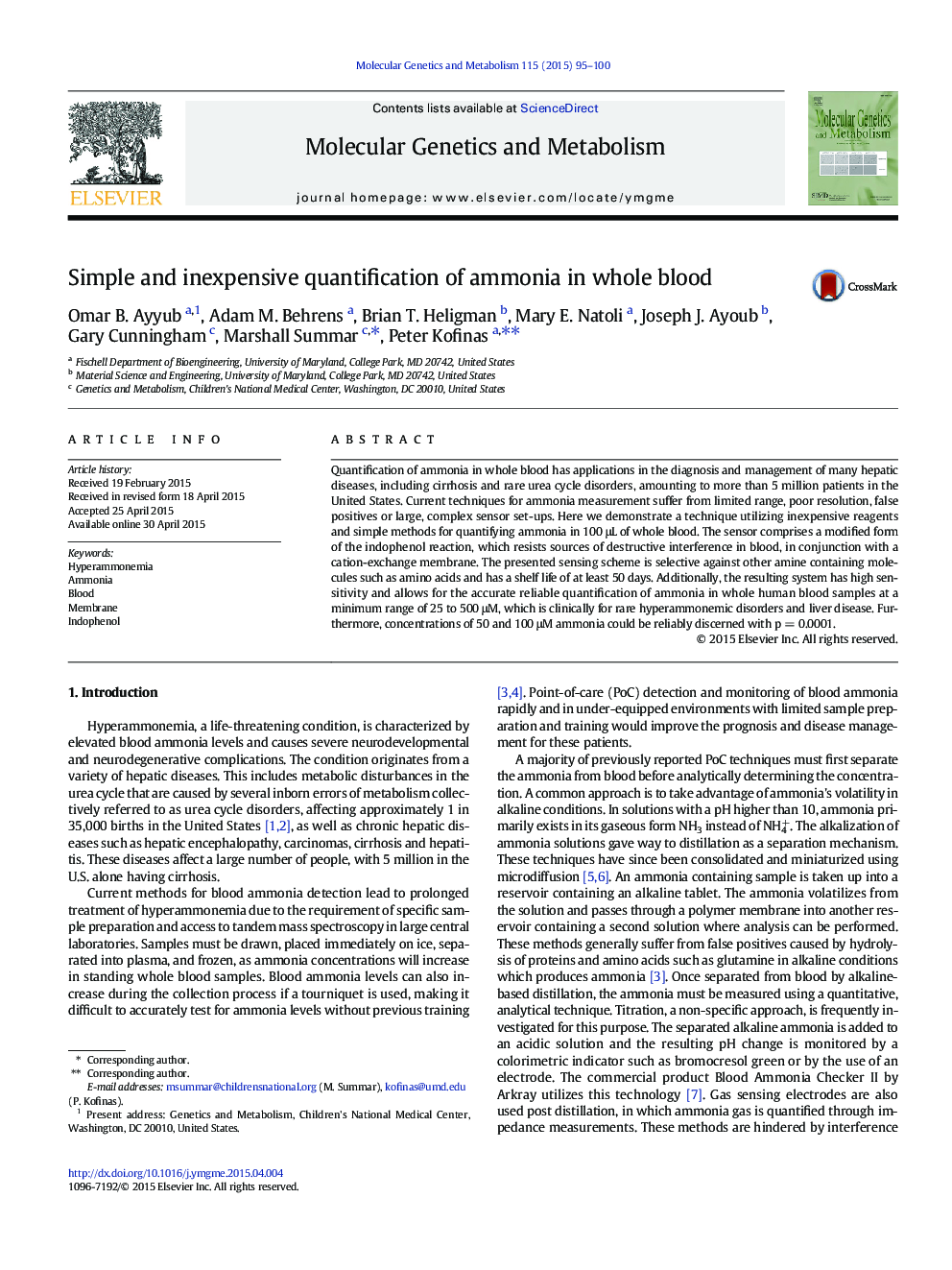| Article ID | Journal | Published Year | Pages | File Type |
|---|---|---|---|---|
| 8343783 | Molecular Genetics and Metabolism | 2015 | 6 Pages |
Abstract
Quantification of ammonia in whole blood has applications in the diagnosis and management of many hepatic diseases, including cirrhosis and rare urea cycle disorders, amounting to more than 5 million patients in the United States. Current techniques for ammonia measurement suffer from limited range, poor resolution, false positives or large, complex sensor set-ups. Here we demonstrate a technique utilizing inexpensive reagents and simple methods for quantifying ammonia in 100 μL of whole blood. The sensor comprises a modified form of the indophenol reaction, which resists sources of destructive interference in blood, in conjunction with a cation-exchange membrane. The presented sensing scheme is selective against other amine containing molecules such as amino acids and has a shelf life of at least 50 days. Additionally, the resulting system has high sensitivity and allows for the accurate reliable quantification of ammonia in whole human blood samples at a minimum range of 25 to 500 μM, which is clinically for rare hyperammonemic disorders and liver disease. Furthermore, concentrations of 50 and 100 μM ammonia could be reliably discerned with p = 0.0001.
Related Topics
Life Sciences
Biochemistry, Genetics and Molecular Biology
Biochemistry
Authors
Omar B. Ayyub, Adam M. Behrens, Brian T. Heligman, Mary E. Natoli, Joseph J. Ayoub, Gary Cunningham, Marshall Summar, Peter Kofinas,
